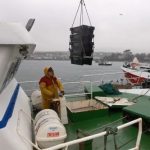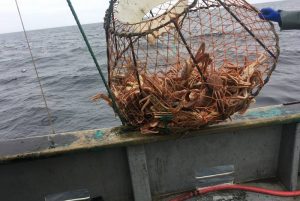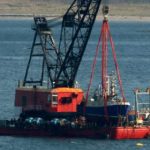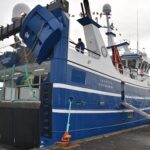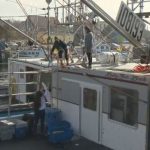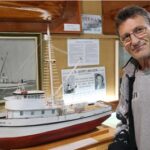Tag Archives: Smithsonian Environmental Research Center
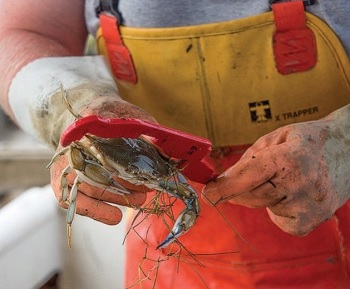
Chesapeake Bay: Targeting male blue crabs for harvest is preventing female crabs from having offspring
The Bay’s crab fishery is currently regulated to limit the harvest of female crabs, in a so-far successful effort to ensure that enough survive to reproduce and maintain the crustacean’s overall abundance — and sustain the estuary’s most valuable fishery. But researchers have wondered — and even worried at times — if harvesting more male crabs (or jimmies, as watermen call them) than females could be having an impact on the population. >click to read< 17:27
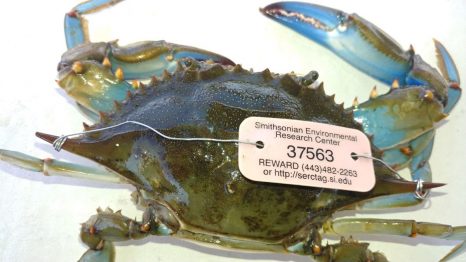
Florida fisherman finds Maryland blue crab
A blue crab was tagged by the Smithsonian in Maryland, and then traveled several years to Florida, where a fisherman recently found it. click here to watch the video. Tagged blue crab caught locally raises eyebrows – When Tom Cochran started crabbing in the Crystal River, he didn’t think he’d make the news. But on Wednesday, Cochran caught a crab he considered noteworthy: one with a tag on it that read “Smithsonian Environmental Research Center.” click here to read the story 09:19
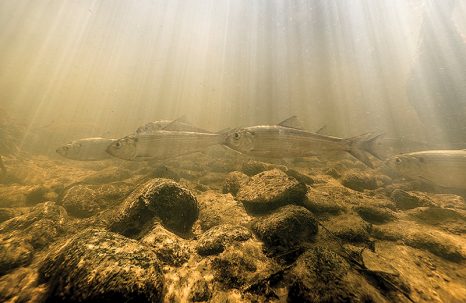
Sonar revealing more river herring in Choptank River than expected
Scientists have a powerful new tool to help them “see” fish in the Chesapeake Bay’s murky tributaries, and it’s yielding some surprisingly good news about two of the estuary’s most troubled species. “Imaging sonar” uses sound to help them view, and count, passing fish in dark or cloudy water. For the past few years, scientists with the Smithsonian Environmental Research Center have been deploying one of these underwater sound cameras in some of the Bay’s rivers to monitor spawning runs of alewife and blueback herring, collectively known as river herring.,,No one knows for sure how many river herring are in the Bay, as fisheries managers lack the staff and resources to do a comprehensive assessment. But a SERC-led team of scientists deployed an imaging sonar device in the Choptank River in 2014 that captured images of the fish as they swam by. Based on the rate at which scientists saw the shadowy blips cross their computer screens, they estimated that as many as 1.3 million river herring swam upriver that spring to spawn. That’s more than expected, and way more than state biologists had figured were there in the early 1970s, the last time anyone looked intensively at the Choptank’s herring runs. Read the article here 10:14
Smithsonian expert urges caution, patience on blue crab recovery
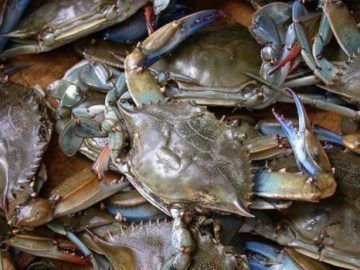 The results are in, 2016 is going to be a good year for blue crabs in the Chesapeake Bay. An iconic figure embedded in the culture and cuisine of the Chesapeake Bay area, the blue crab (Callinectes sapidus) sustains the most profitable fishery in Maryland and supports thousands of fishermen and seafood businesses in Maryland and Virginia. Based on the annual winter survey conducted by the Maryland Department of Natural Resources and the Virginia Institute of Marine Science, there are nearly 35 percent more blue crabs in the Chesapeake Bay this season than there were in 2015. That’s good news, especially on the heels of a 38 percent increase the previous year. But scientists say there is a cautionary tale in this rapid rise. (but, of course!) Read the rest here 16:29
The results are in, 2016 is going to be a good year for blue crabs in the Chesapeake Bay. An iconic figure embedded in the culture and cuisine of the Chesapeake Bay area, the blue crab (Callinectes sapidus) sustains the most profitable fishery in Maryland and supports thousands of fishermen and seafood businesses in Maryland and Virginia. Based on the annual winter survey conducted by the Maryland Department of Natural Resources and the Virginia Institute of Marine Science, there are nearly 35 percent more blue crabs in the Chesapeake Bay this season than there were in 2015. That’s good news, especially on the heels of a 38 percent increase the previous year. But scientists say there is a cautionary tale in this rapid rise. (but, of course!) Read the rest here 16:29


































